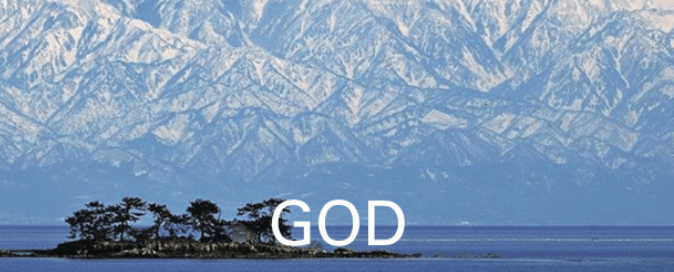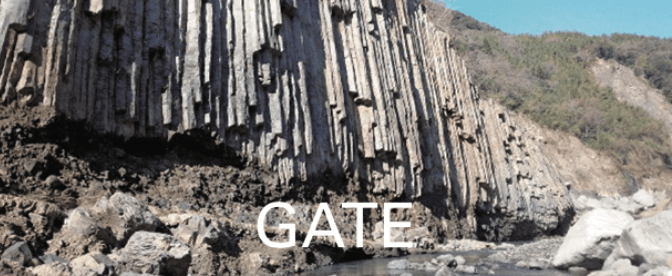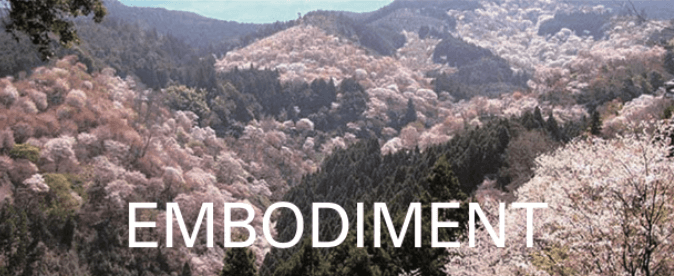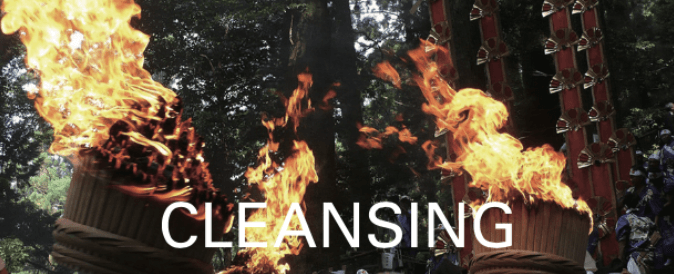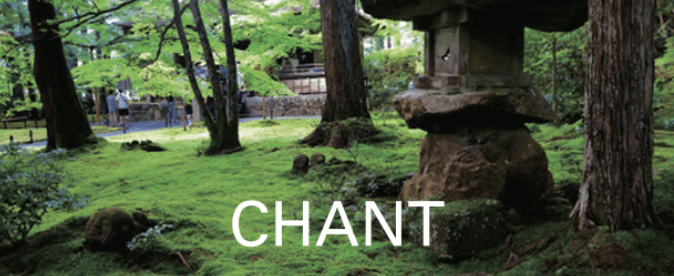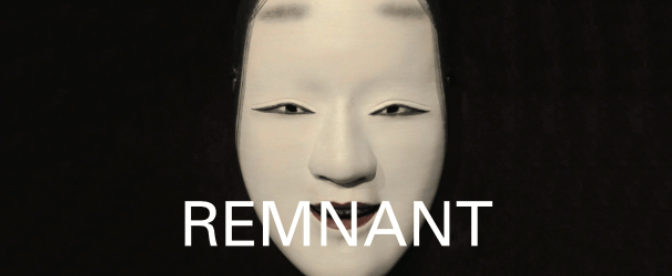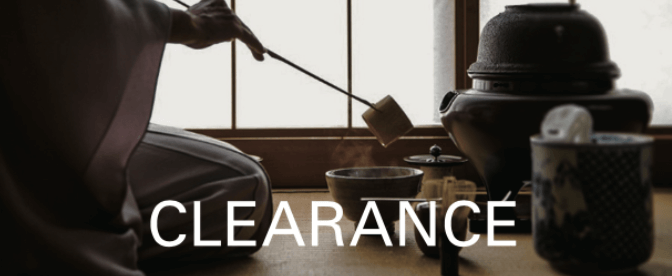
Shokado Shojo (1584 – 1639) was a Buddhist priest attached to Iwashimizu Hachimangu shrine, who was known as Sanpitsu, three famous calligraphers in the Kanei era(1624~44)in the Edo period.
He worked as an intermediary between courtiers in the Imperial court and samurai retainers in the Shogunate, for the meeting of Emperor Go-Mizuno (1596 – 1680) and Tokugawa Iemitsu, the third shogun (1604 – 1651) at Nijojo Castle in Kyoto.
The remnants of Shokado, thatched hut, and Izuminobo shoin, drawing room, were relocated from Otokoyama Iwashimizu Hachimangu shrine to this garden. And the glorious Kinmei Mousouchiku, a thick-stemmed bamboo with glowing yellow stalks and nodes that turn green in summer.
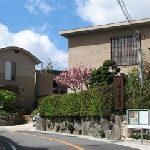
The museum is located in Kotoen, an educational area, rich in greenery, on the Rokko Mountains. It possesses a wide range of antique art from Japan and China, such as Akarakujawan, a Red Raku tea bowl, named Muichibutu, by Raku Chojiro (died 1592), the first generation in the Raku family line of potters. Raku worked for Sen no Rikyu (1522 – 1591), the greatest tea master, the tea master to the military dictator of Japan, Oda Nobunaga and Toyotomi Hideyoshi, and the inventor of the wabi-sabi style of tea ceremony.
The museum’s collection also includes: Mandala drawings, Suibokuga: ink painting, Chinese porcelains, and Bokuseki, ink calligraphy of masters and high priests. The Egawa family engaged in Kaisengyo, shipping and trading, and the forestry industry in the Edo period (1603 – 1868), and contributed to the cultural development of Nagasaki and Kamigata (Kyoto and Osaka area). They were also a distinguished family of Totsuji, Chinese translators in Nagasaki during the Edo period, who, over many generations, played a diplomatic role in Nagasaki trade.
– This museum is temporarily closed.
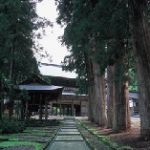
This temple is surrounded by mountains on three sides and stands so that it is protected by a 700 year old tree. This temple was founded by Dogen Zenji (1200 – 1253), a Japanese Buddhist priest, poet, philosopher and founder of the Soto school of Zen, in 1244. Dogen moved down to Echizen, Fukui to avoid conflict with the Old Buddhism schools in Kyoto.
He thought that the Buddha was just Zen Meditation, and the enlightenment was just in its training. The precincts are connected with the complex of temple buildings with seven major structures and about 70 pantheon and multistoried buildings along the corridors. It is as clean as it was in the beginning.
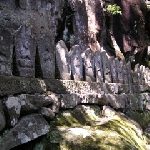
The name came from the Sanskrit for “pure spring.” Since ancient times, pure water has sprung out and it is a Buddhist practice place.
There is a 30-minute hiking course from Myosenji Temple at the foot of the mountain, to Kannon-do, temple dedicated to Kannon: the Buddhist Goddess of Mercy, where the hundred stone statues of Kannon, the Buddhist Goddess of Mercy, are deified. There are stone monuments and stone Buddhas along the path. Seningatake, an observatory, is a 5 minutes’ walk from Kannon-do.
You can overlook Sakudaira where there used to be an ancient government horse ranch, Mochizuki no Maki.
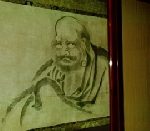
This temple in Gero City is the predecessor of Entsuji Temple, which was connected to Eshin Sozu Genshin (942 – 1017), the 18th head of the Enryakuji Temple and compiled in Ojoyoshu, “Essentials of Birth in the Pure Land”. This temple has a complex of temple buildings in the style of the Song Dynasty (960 – 1279).
This temple possesses “Haponirami Dharma”, Dharma glaring in all directions, drawn by Sesshu Toyo (1420 – 1506), a Zen monk and the master ink painter in Japan, as his masterpiece. This temple also has the garden, Banzaido, designed by Kanamori Sowa(1584 – 1657), a master of the tea ceremony and garden designer, who was called Hime Sowa, the tea ceremony style loved by the court nobles in Kyoto.
This garden resembles megaliths, as the water flows between the mountains and pours into Shinjiike pond, a heart-shaped pond. Sowa was a legitimate child of the Kanamori family which developed Hidatakaya, as a castle town.

Mt. Mitokusan, itself is in the precincts of this temple. This temple is a mountain of Shugendo, Japanese mountain ascetic practices. It has a history of 1,300 years since founded by En no Gyojya (Born 634), a Japanese ascetic and the founder of Shugendo. The National Treasure, Nageire-do Hall, is located in a cliff on the mid slope of Mt. Mitokusan around the Chugoku Mountains. It is said to have been thrown into the cliff by the magical power of En no Gyojya.
The thatched roof is Nagare Zukuri, a one gabled roof and a non-gabled roof on one side, which has camber and appears to have an ascending sensation, by the extending the front eaves. This hall has a go-round Passageway with Koran, a railing, on the west side, and is supported with various pillars.
You must submit an application and wear a Buddhist priest’s stole (lent to you for the visit), when you climb to the mountain.
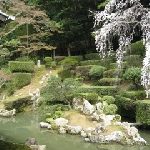
This temple was the sub-temple of Sokanji temple, built by Masuda Munekane, a samurai and the 17th head of a Masuda clan Iwami Province in the Muromachi Period (1366 – 1573). This temple was located on the premises of Sokanji temple. Only this temple remained. This temple has Somon, the main gate of the temple, in the style of Ryugu Zukuri, a two-story gate, called “dragon palace style.”
This style was characteristic of the Obaku sect of the Zen sects in Buddhism, which was introduced to Japan from China during the Ming Dynasty (1368 – 1644). The garden was designed by Sesshu Toyo (1420 – 1506), a Zen monk and the master ink painter in Japan. Sesshu who left Unkoku-en, the studio of Sesshu Toyo (1420 – 1506), a Zen monk and the master ink painter in Japan, around 1479. He became the 5th chief priest of Sokanji.
This garden overlapped with the mountain behind and expresses a different aesthetic in each season.

This museum exhibits a short sword, bearing an inscription of Kiyomaro,(Minamoto Kiyomaro (1813- 1855) , a renowned swordsmith in the end of Edo period), which has a bright blade surface and the strength of Kinsuji, the bright thick line pattern on the blade.
This museum introduces Omote Dogu, official utensils of the samurai family, arms and armor, as the culture of life and death, and various tools and art works of life to sustain samurai as the daily culture. Since ancient times, samurai have been rooted in the earth, always putting death in front of them, and trying to repeat their days of realizing life.
Samurai had rooted on the ground, kept the fate of death in their mind, and tried to feel the art of living each day.
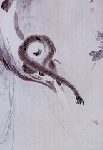
This museum is located at the eastern end of the Kanmon Strait, which is known for being the end of the Genpei War, the battle between the Taira and Minamoto clans in the 12th century, and the birthplace of the Meiji Restoration, an event that sectored practical imperial rule of the Empire of Japan in 1868, under Emperor Meiji.
This museum introduces Kanou Hogai (1828 – 1888), the last Japanese artist of the Kanou school, who was Goyo-eshi, a purveying painter to the Chofu Domain, in the End of the Edo period. Hogai drew Koboku Enko-zu, a picture of a monkey in dead trees, in which a gibbon extends its long hand to catch a bee by its fingers.
Hogai learned well the art of painting monkeys from three masters: Sesshu Toyo (1420 – 1506), a Zen monk and the master of ink painting in Japan in the Muromachi Period (1366 – 1573), Hasegawa Tohaku (1539 – 1610), a Japanese painter and founder of the Hasegawa school, in the Azuchi-Momoyama period (1573 – 1603), and from Mokkei (1210 – 1269), Chinese Zen monk and ink painter in Southern Son Dynasty (1127 – 1279).

Sesshu Toyo (1420 – 1506), a Zen monk and the master ink painter in Japan, stayed in Yamaguchi with the support of the Ouchi clan, one of the most powerful feudal lords of the Ashikaga Shogunate in the 12th – 14th centuries. He settled there, after going to China to study, during the Song Dynasty (960 – 1279), on the Ouchi clan’s trading boat. He left in Yamaguchi masterpieces like the National Treasure Shiki Sansuizu, Four Seasons Landscape, which he drew from his memory, with high realism.
His memory of landscapes extended to garden design. He designed the garden remains at this temple. The arrangement of stones in the traditional Chinese Zen-style and the subtle changes in the Japanese four seasons, make a beautiful harmony
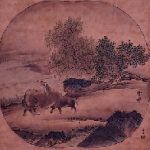
This museum has many works of: Sesshu Sesshu Toyo (1420 – 1506), a Zen monk and the master ink painter in Japan, in the Muromochii Period (1366 – 1573), the Unkoku school of painting, founded by Unkoku Togan (1547 – 1618), of Kanga, a school of Chinese painting in Japan, Kanou Hogai (1828 – 1888), the last artist of the Kanou school, and Mori Kansai (1814 – 1894), a Japanese Painter, in the Meiji period (1868 – 1912), and Kazuki Yasuo (1911 – 1974), a Japanese Painter and Matsuda Shohei (1913 – 2004), a Japanese Painter in the days after the 2nd World War.
Hogyuzu, the painting of pasturing cattle, was influenced by the authority in Song Dynasty (960 – 1279), which divides the paper in the shape of a paper fan. It is 31.5 cm long and 33.5 cm wide in the mounting of hanging scrolls, which mimicked the work of Li Tang, a Chinese painter who worked in the style of the Song Dynasty (960 – 1279). Sesshu made it before his drawing his National Treasure Shikisansuizu, Landscape of the Four Seasons, (Sansui Chokan, Long Landscape Scroll), around 1470.

This museum is a rare museum that specializes in displaying Japanese swords, which exhibits 41 pieces, as their permanent exhibition.
Bizen Province has been blessed with good-quality sand iron in the Yoshii River basin since ancient times, and swords have been produced. Bisen Osafune had suppled long warped swords to Emperors and courtiers in Kyoto since the middle of the Heian period (794 – 1185).
As demand for the swords increased, during the period of the Northern and Southern Courts (1336 – 1392) and the Muromachi Period (1366 – 1573), they transformed from a system of a few apprentices to mass production, through the division of labor.
Bizen Osafune became the armory of Japan, as its peak in the Age of Provincial Wars in the 15th – 16th centuries.
